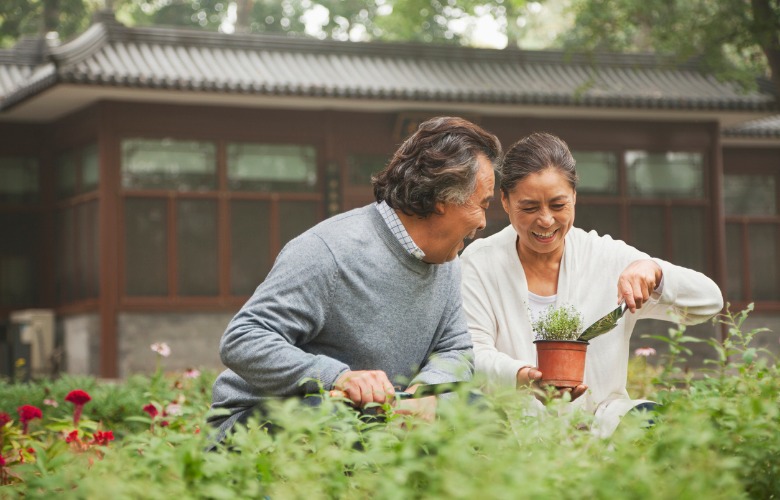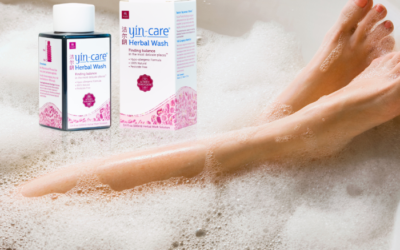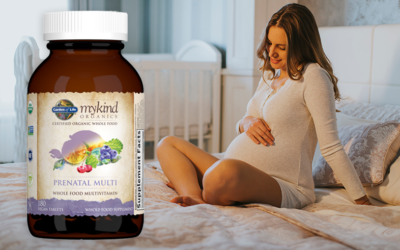The Road to Yin Qiao
History first
The original Yin Qiao San was developed by Wu Ju Tong, and recorded in Wen Bing Tiao Bian, “Warm Diseases Systemic Differences” (1798 C.E.). Not a super catchy title, however, this tome represented advances in the understanding and treatment of febrile ( feverish ) diseases. Before Wen Bing or “Warm Diseases”, there was Shanghan Lun “Cold Damage Diseases” (200 C.E.) written by Zhang Zhongjing. In that book, the core concept was that all illnesses resulted from the damage of cold weather. Heat symptoms were the result of cold that had been trapped and transformed into heat. The treatment strategy was to drain the heat from the interior with cold and bitter herbs. In biomedical terms, this would be similar to treating a virus with an antibiotic. A strategy that can end up doing more harm than good. Many of the concepts and herbal formulas from this Han dynasty classic are used in modern clinics. Also in the Han Dynasty, Emperor Wu, after hearing about trade opportunities, opened China to the west and the Silk Road was born. Silk was particularly coveted by the Romans. Other traded goods included porcelain, tea, paper, and gunpowder. By the beginning of the Tang Dynasty (1698 C.E.), the Silk Road was humming. Traders brought home goods, wealth and tales. They also brought diseases such as smallpox, diphtheria, tuberculosis, typhoid, and typhus. Chinese doctors realized they needed a framework beyond “Cold Damage” to understand and treat these new diseases. Wen Bing Tiao Bian is the result of the experiences and observations of untold physicians. Wu Ju Tong organized the concepts, wrote it all down, and made some contributions of his own. There are significant breakthroughs about the nature of the disease. Wen Bing or fever disease spreads very quickly. This is referring to an epidemic situation. Once in the body, it can remain latent and after an incubation period, the condition develops. The pestilent qi or pathogen can be transmitted via the digestive system or through the air. Infections spread through food, water and from coughing and sneezing. For perspective, it was a hundred years later that English doctor William Budd realized Typhoid was transmitted through contaminated water.(5)
Yin Qiao was originally cooked up to treat childhood Chicken Pox and Measles, which entered China via the Silk Road. These are febrile diseases and present as Wind-Heat. The formula was designed to clear the superficial levels of the body and to go deeper to the Qi and Blood levels to force the heat toxins out to the surface (1). With the surface cleared and opened, the Heat-Toxins are forced out and seen in the form of a rash. The rash is then cleared further from the surface and the skin. It was considered important to fully vent the rash lest the pathogen become trapped and later cause of an illness. A biomedical example of this is the Chicken Pox virus which causes shingles decades after the initial illness. The same herbs work in the same way for a Wind-Heat common cold though we do not get to see the surface clearing since there is no rash to monitor. What is important is the Wind-Heat pattern of the symptoms, not the name. These days Yin Qiao most likely to be used for the early stage of a Wind-Heat common cold.
Both uses can be seen in the ingredients of the formula. The following list contains all the herbs in Yin Qiao. The first entry is the Pin Yin name of the herb accompanied by a common name and/or the scientific nomenclature. Next, are the uses that pertain to colds and flu, then uses that are related to itches and rashes. Included in this list are the biomedical actions of each herb, you can see that these support the workings of the formula. Chinese herbs are usually taken as a formula because of the synergistic workings of the herbs. Commentary on typical pairings is sprinkled throughout this list. I know you love lists, so have at it.
Jin Yin Hua, honeysuckle flower, Lonicera Japonica.
Uses: Clears wind heat early stages of feverish diseases, sore throat, headache, dysentery: hot and painful swellings and sores, of the breast, throat, or eyes.(2)
Biomedical: Antiviral antibiotic, anti-inflammatory, and antipyretic (3)
Lian Qiao, forsythia fruit, Fructus Forsythiae
Uses: Cools fever, clears heat and toxins from the surface, dissipates nodules. (2) In ancient times Lan Qiao was used primarily for swellings, sores, goiters, tumors, and abscesses. (4)
Biomedical: Antibiotic, antiviral, anti-inflammatory, and antipyretic. (3)
Commentary: Jin Yin Hua and Lian Qiao are cooling herbs, remember we want to cool the heat, and they release the exterior. That means they clear the heat pathogen from the Wei or surface layer of the body, this includes the lungs. Jin Yin Hua paired with Gan Cao is used for itching damp rashes.
Jie Geng, the root of the balloon flower, Radix Platycodi Grandiflora,
Uses: Any cough and phlegm, brings herbs to the upper body, expels pus from the lungs and throat, benefits voice. (2)
Biomedical: expectorant, anti-tussive, analgesic, and anti-inflammatory. (3)
Nui Bang Zi, great burdock fruit, Fructus Arctic Lappae
Uses: Clears wind heat and toxicity, sore throat, red swellings, mumps, carbuncles, early stages of rashes. (2)
Commentary: Jie Geng and Nui Bang Zi together strongly help the lung qi for coughing and throat.
Bo He, field mint, Herba Menthe Haplocalycis,
Uses: Clears wind heat, fever, headache, cough, sore throat, vents rashes early stages. (2)
Biomedical: Antipyretic and anti-inflammatory. (3)
Dan Dou Chi, prepared soybean, Semen Sojae Preparatum
Uses: Clears wind cold or wind heat, irritability from febrile disorders. (2)
Biomedical: Mild diaphoretic. (3)
Jing Jie, Japanese Catnip, Herba Schizonepetae
Uses: Wind Cold or Wind Heat, vent rashes and alleviates itching.
Biomedical: Antibiotic, antipyretic, and analgesic. (3)
Commentary: Jing Jie’s role is to boost the exterior releasing property of the formula.
Dan Zhu Ye, bland bamboo leaves, Herba Lophatheri Gracilis
Uses: Clears heat, mouth sore, irritability. (2)
Biomedical: Antipyretic. (3)
Lu Gen, reed rhizome, Rhizome Phragamitis Communis
Uses: Clears heat, generates fluid, clear heat for cough in the acute stage, promotes urine, encourages rashes to vent if incomplete. (2)
Biomedical: Antibiotic, anti-inflammatory, and antipyretic. (3)
Commentary: Although Chinese herbs are rarely used singly, Lu Gen is for rashes.
Gan Cao, licorice root, Radix Glycyrrhizae
Uses: Stops cough, clears heat, disperses wind-heat, resolves toxicity. (2)
Biomedical: Anti-inflammatory, increases phagocytosis, anti-tussive, expectorant, and antibiotic.(3)
Commentary: Dan Zhu Ye, Lu Gen, and Gan Cao generate fluids and alleviate thirst.
Gan Cao and Jie Geng treat sore throat. Pair Bo He and Nui Bang Zi for a severely itching rash or incomplete venting. Use Jing Jie and Bo He for itching and to vent a rash.
Correct usage leads to successful treatment in the herbal battle against the common cold. Yin Qiao is best used in the very beginning of a cold, at the first appearance of symptoms. The reason for this is that the herbs used in it do not address the deeper levels of the body. It can be used preventatively at a lesser dose or once a day. It should be used only for Wind-Heat. The symptoms of Wind-Heat are the following: fever with mild chills, aversion to heat, headache, thirst, cough, upper backache, sore throat, a dry feeling around mouth and nose. Yin Qiao is contraindicated for Wind-Cold. The symptoms for Wind-Cold would be, obviously, colder in nature. The chills would be stronger, a feeling of cold or stiffness in the upper back or neck, headache, and nasal congestion. Biomedical indications for Yin Qiao are the common cold, flu, bronchitis, pneumonia, tonsillitis, measles, mumps, meningitis, and encephalitis B. Again these need to present overall with signs of Wind-Heat. Not all the symptoms need to be present. Because formula addresses itch it is useful in treating Poison Oak and Poison Ivy.
The next time you feel a Wind-Heat coming on, you can reach for the Yin Qiao with the sure knowledge that it is the right formula.
References
1 Bensky, Scheid, Ellis, Barolet Formulas and Strategies. Portable 2nd edition. Eastland Press Inc. 2015
2 Bensky, Gamble, Chinese Herbal Medicine Materia Medica, Revised Edition, Eastland Press, 1993
3 Chen, Chinese Medical Herbology and Pharmacology, Art of Medicine Press, 2004
4 Yang, The Divine Farmer’s Materia Medica, A Translation of the Shen Non Ben Cao Jing, Blue Poppy Press Inc, 1998
5 Jake Paul Fratkin, OMD, L.Ac. TCM ANTI-VIRAL THERAPY Using Wen Bing Theory in the Treatment of Modern Epidemics, CEU class,

A licensed acupuncturist since 1999, Diana lives and works in Santa Cruz, California. Her practice focuses on pain management, stress reduction, and creating health. A longtime friend of plants, she loves the herbal side of Traditional Chinese Medicine. Diana shares her herbal interests through writing and a card game she designed and illustrated: Herb Apocalypse*. Volunteer work includes The Rabbit Haven, a rabbit rescue, and Livity Rising, free community healing clinics. Author of Herb Apothecary: The Coloring Book: 54 Chinese Herbs available on Amazon.



